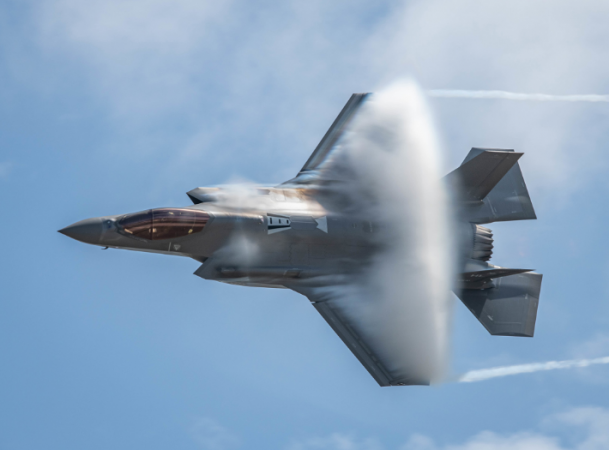
USA: The Program Office, which manages the aircraft, claims that each of the more than 825 F-35 fighters delivered so far has a part made from a Chinese alloy that is illegal under both US law and Pentagon regulations .
A magnet used in aircraft-power equipment, according to the Pentagon's F-35 Program Office, has been in use on aircraft since 2003. The Pentagon halted deliveries of the new F-35s on Wednesday to ensure the schedule. Complies with the laws relating to "Special Metals".
The program, which could produce more than 3,300 jets, will now ask the Pentagon's top acquisition officer, William LaPlante, for a national security waiver, according to F-35 spokesman Russell Gomere, to allow new aircraft already assembled with the alloy. delivery can be resumed.
LaPlante said if there were no safety or security concerns when speaking to reporters on Friday, the exemption might have been granted.
"I hope this can be resolved very soon," LaPlante said.
According to Goemere, the program office does not anticipate "replacing magnets in delivered planes." It can be costly and time-consuming to replace more than 500 US operational and training aircraft to replace them. According to Lockheed Martin Corp., which manufactures the aircraft, the Pentagon has found a US supplier of the alloy needed for upcoming planes.
The use of special metals or alloys produced in China, Iran, North Korea or Russia is prohibited by US law and Pentagon takeover regulations. On 19 August, the F-35 Program Office was notified of the breach by the Defense Contract Management Agency.
To avoid further slowing the already troubled F-35 program, the Pentagon gave Honeywell a waiver ten years ago to use Chinese magnates in other F-35 parts.
According to the Program Office, the part has no technical flaws and does not endanger America's top stealth fighter or its 8 million lines of software.
Instead, the issue is supply chain security and the reason Honeywell failed to find the prohibited alloy. The challenge is made even more difficult by the Pentagon's assessment that China is the biggest global threat to the US.
The situation exemplifies LaPlante's notion of "supply chain illumination".
According to LaPlante, "I told the CEO two weeks ago that he thought he had 300 suppliers and found that when he counted all the suppliers he probably had 3,000, and suppliers could change overnight.
Spokesman Adam Kress said the company had no additional comment, but Honeywell previously said it is cooperating with Lockheed and the Pentagon and is "committed to supplying high quality products that meet all customer contract requirements." meet or exceed."
The device above is a magnet found inside a Honeywell turbomachine that connects an air cycle machine and the aircraft's auxiliary power unit to a single piece of machinery that supplies electrical power for ground operations, main engine start-up, and emergency power. supplies.
According to the F-35 Program Office, it consisted of a cobalt and samarium alloy that was "recently scheduled to be produced in the People's Republic of China" and magnetized in the US. According to Lockheed Martin, it was delivered by a low-end supplier to a Honeywell subcontractor.
According to Lockheed Martin spokeswoman Laura Seibert, "We are working with our partners and DoD to ensure contractual compliance within the supply chain." "We are collaborating with DoD to find a quick solution so that deliveries can resume."
Before the halt, Lockheed Martin had already delivered 88 of the 148 F-35 aircraft that had been ordered.
Japanese F-35B jets make their debut at Australia's Pitch Black exercise.
Ex-security chief of Uber is facing an iconic trial regarding a data breach
US sending GPS-guided Excalibur artillery shells its most accurate to Ukraine